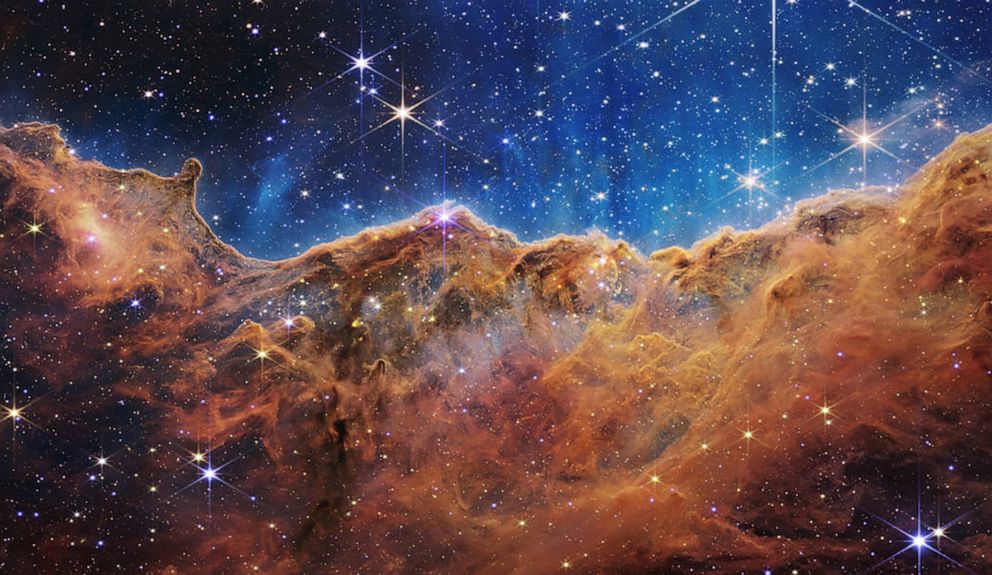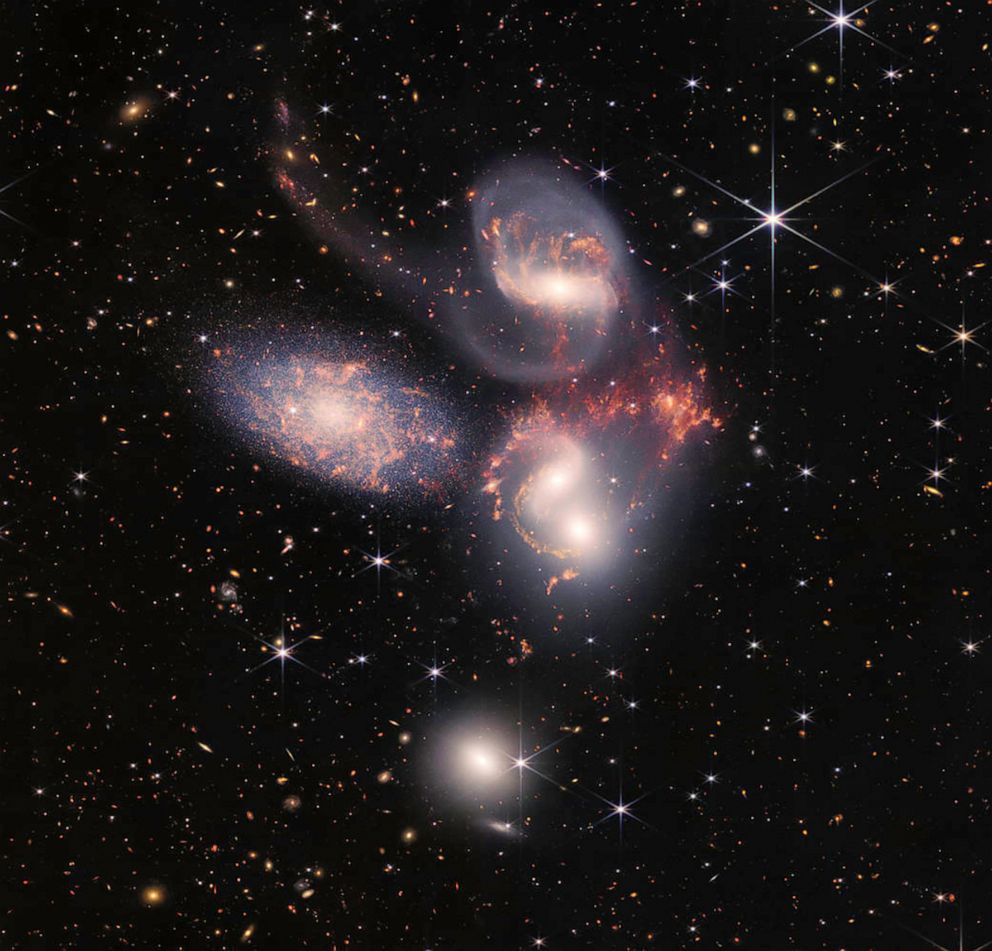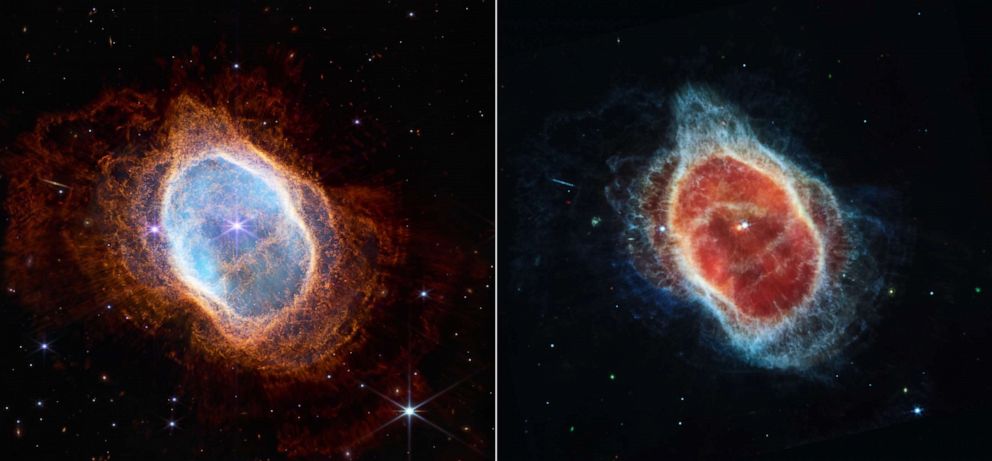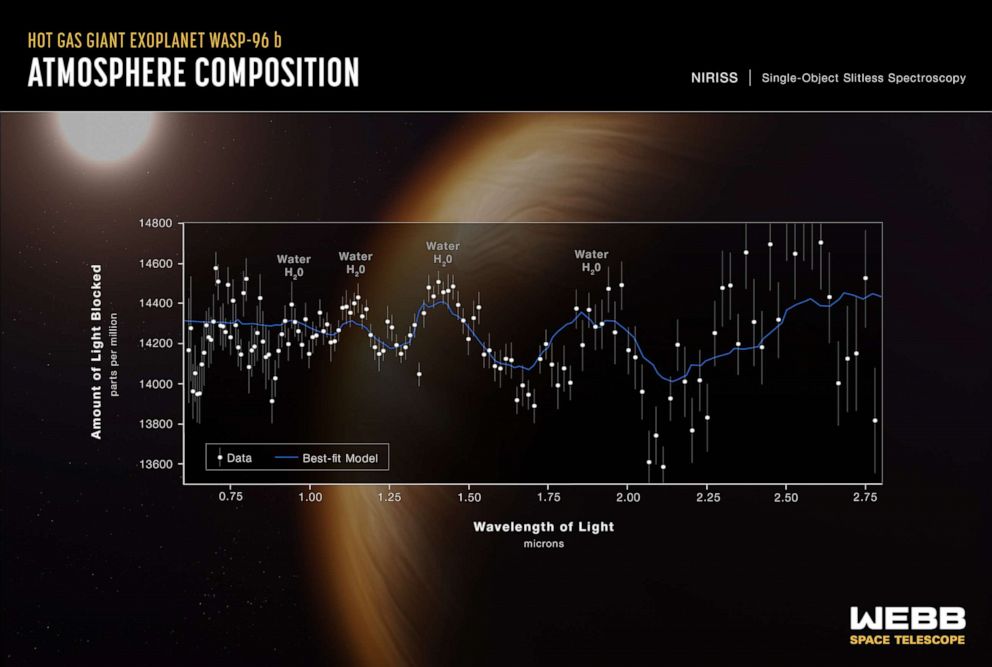Hundreds of new stars in nebula revealed in final image
The final image revealed Tuesday from the James Webb Space Telescope has revealed new details about the Carina Nebula, located in the Milky Way Galaxy.
The image, which is actually just the edge of the nebula, shows hundreds of stars never seen before within the cloud.

Because of the massive amounts of dust and gas that exist within the nebula, the stars were not visible to the human eye.
The area, referred to as the Cosmic Cliffs, shows a "giant, gaseous cavity" as young stars that were recently born push down ultraviolet radiation and create the jagged-looking edge.







